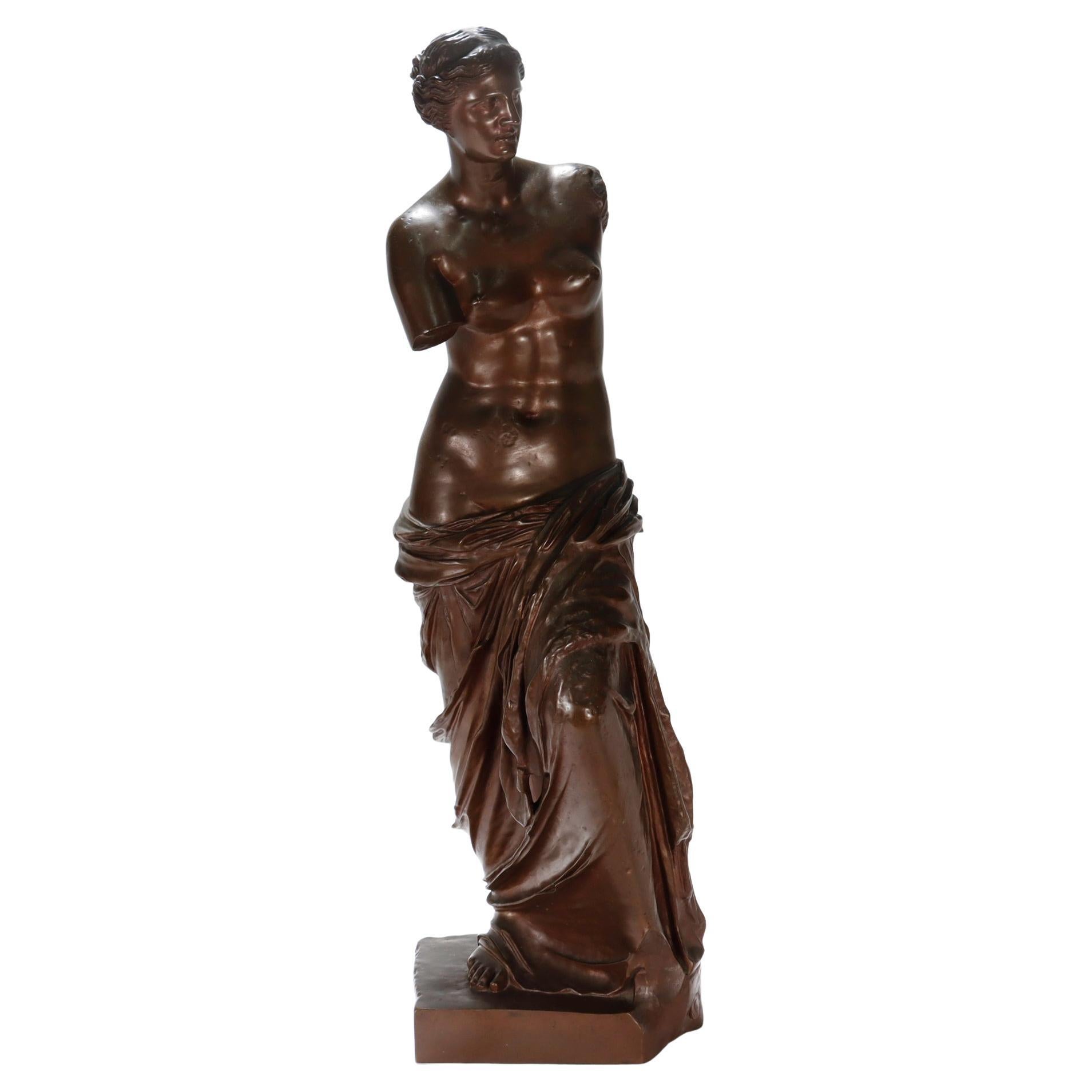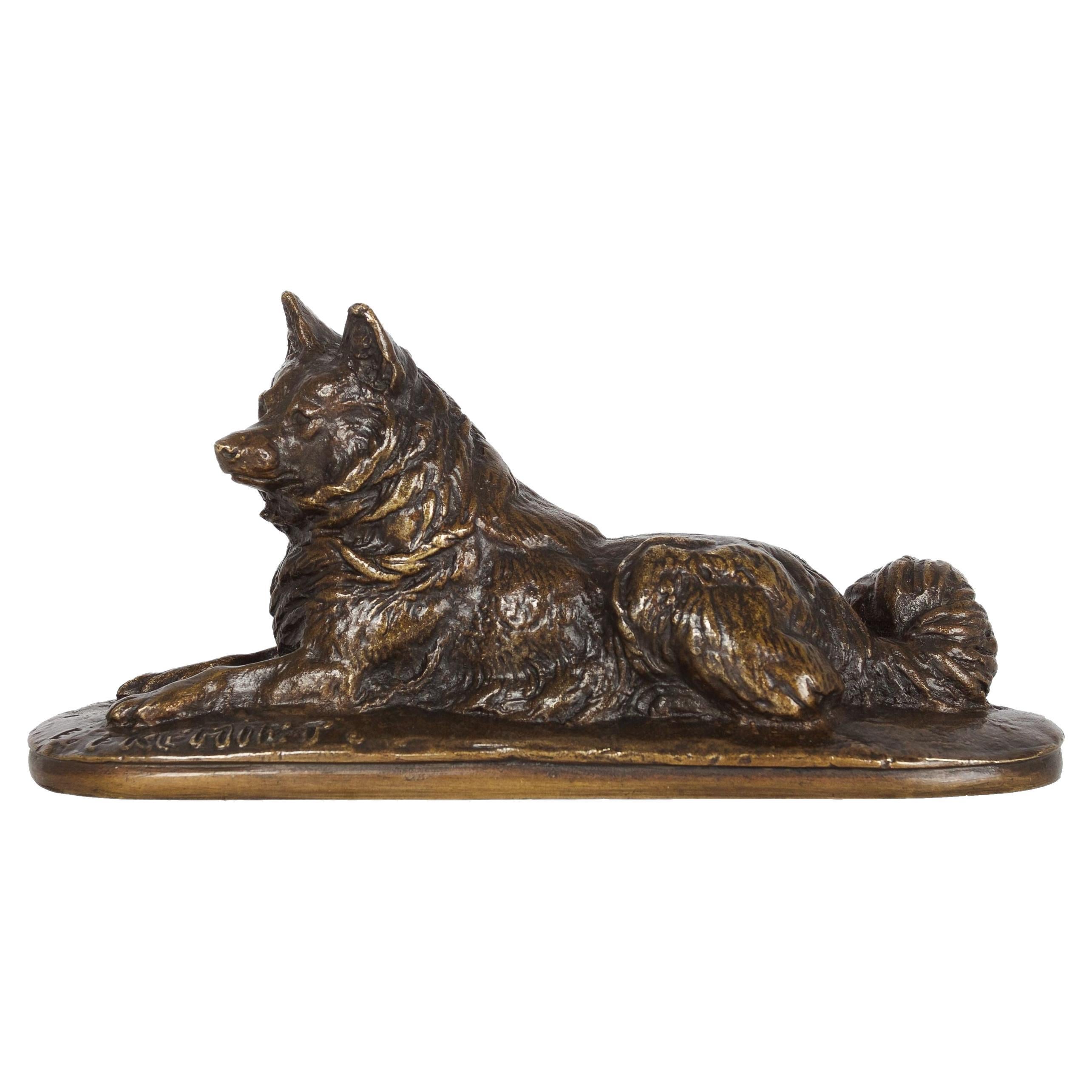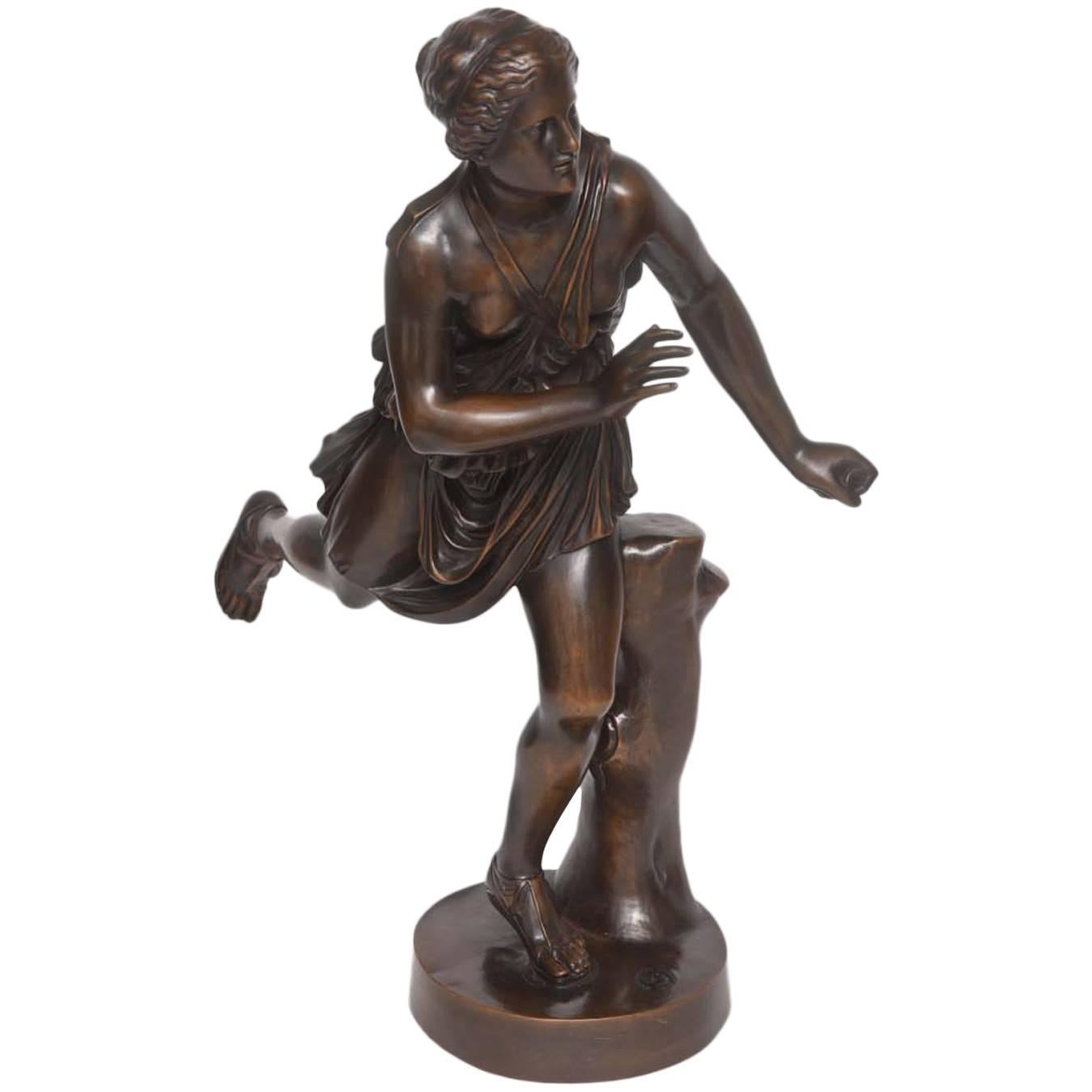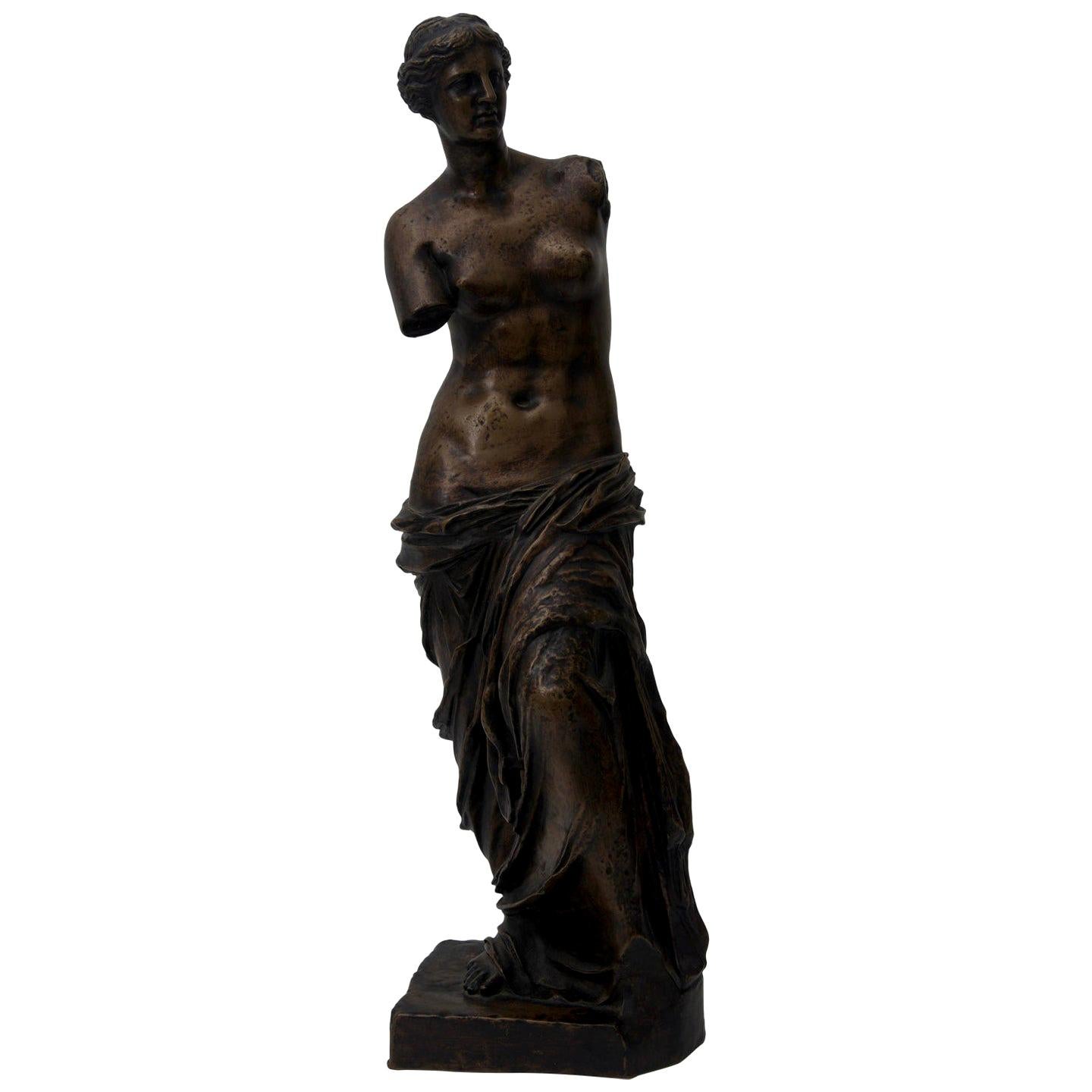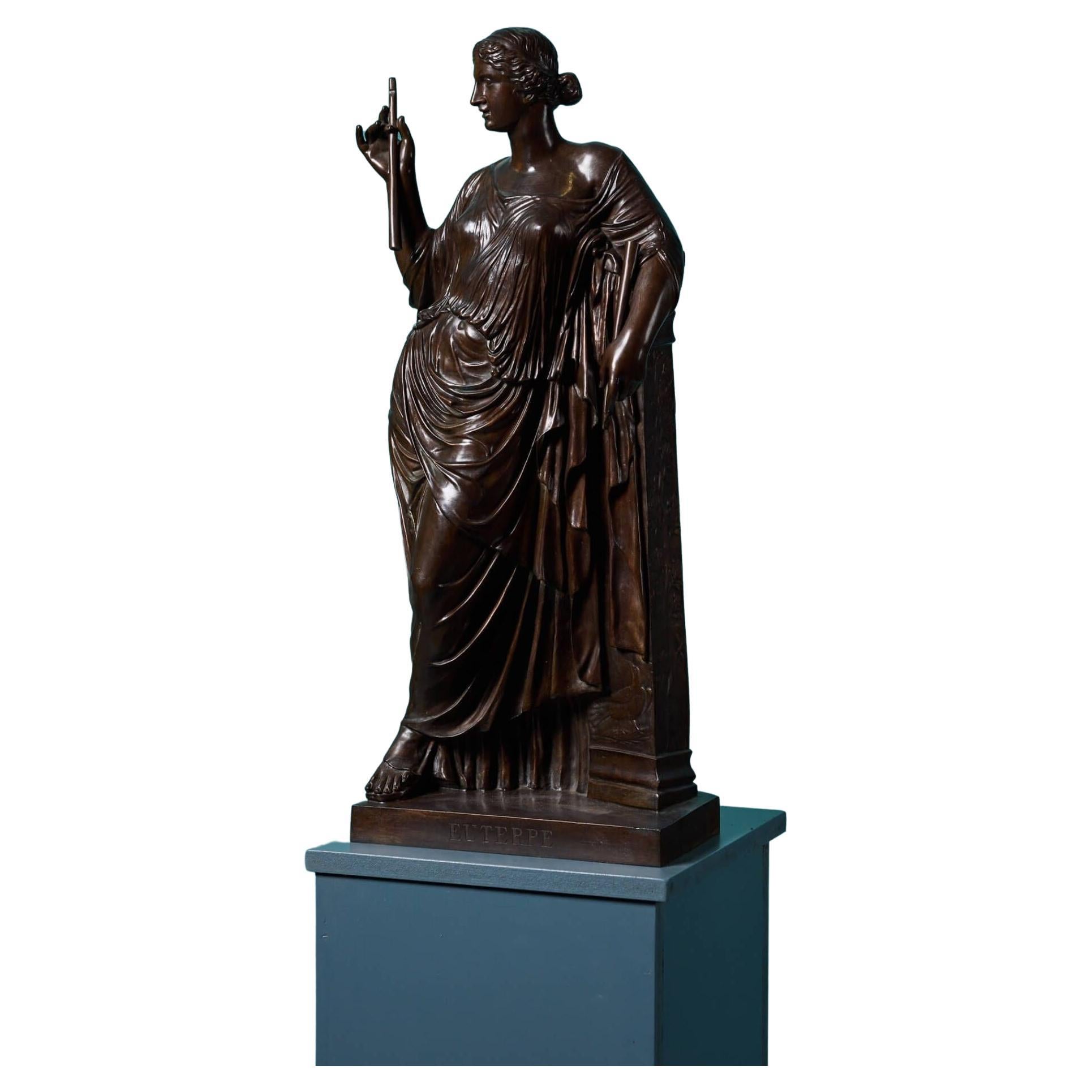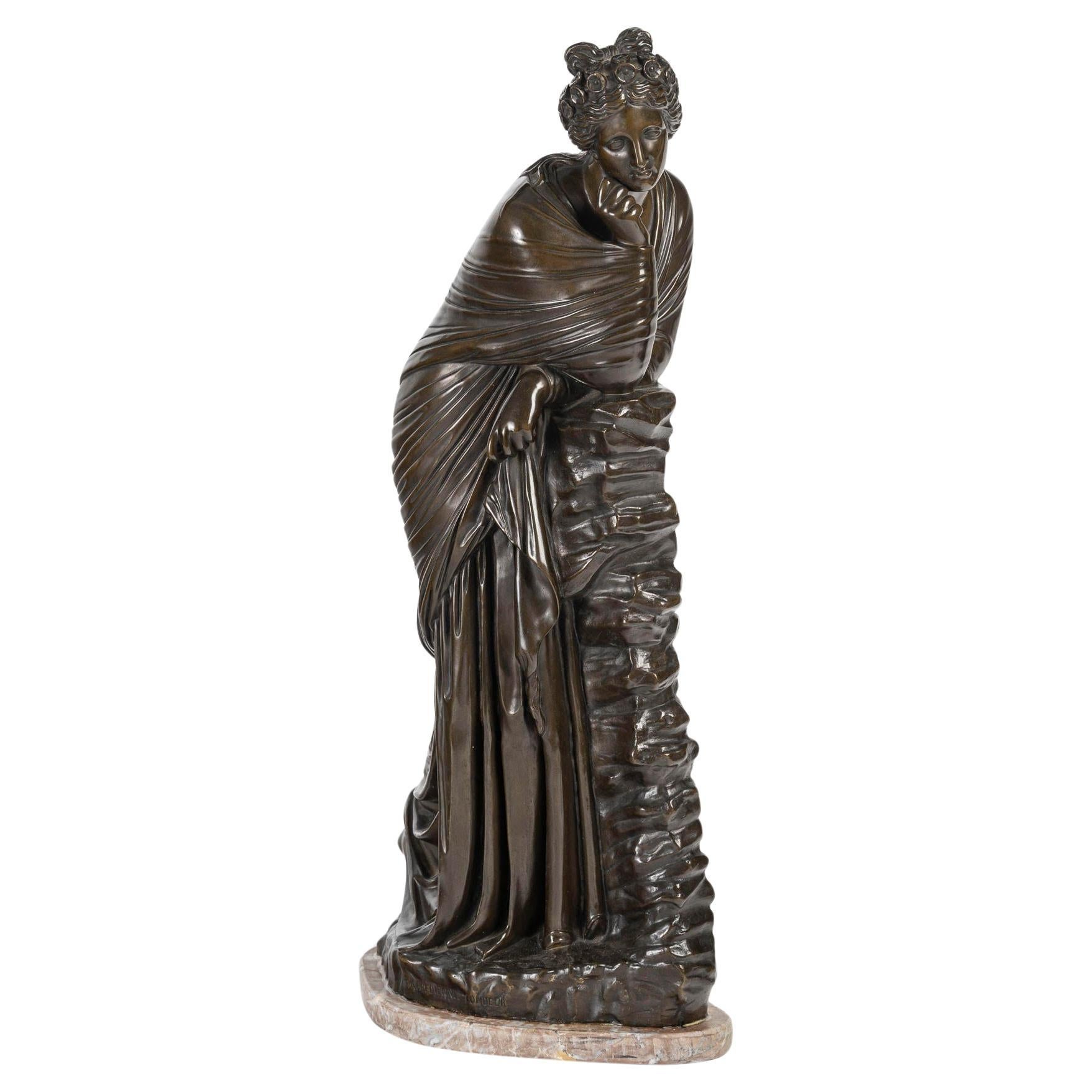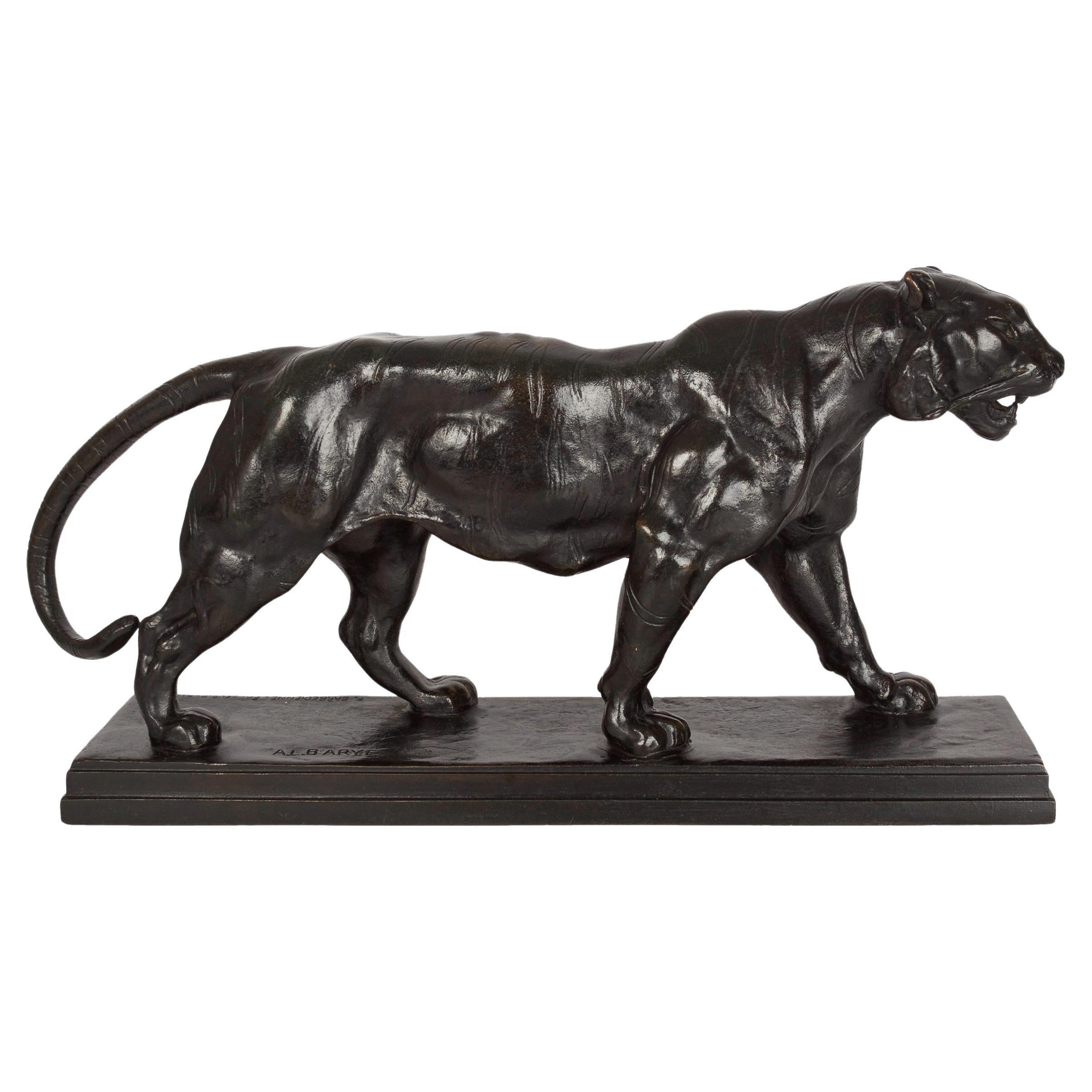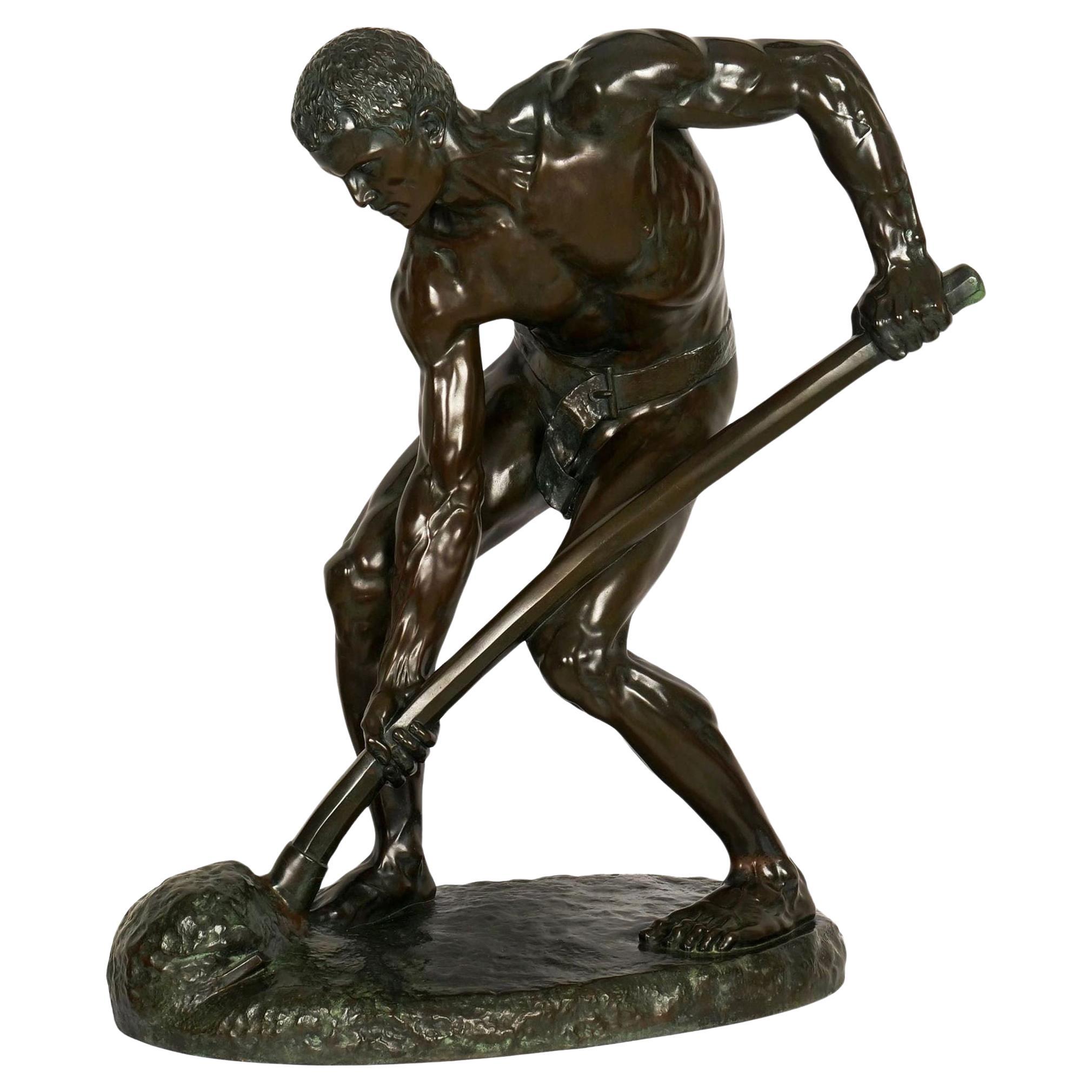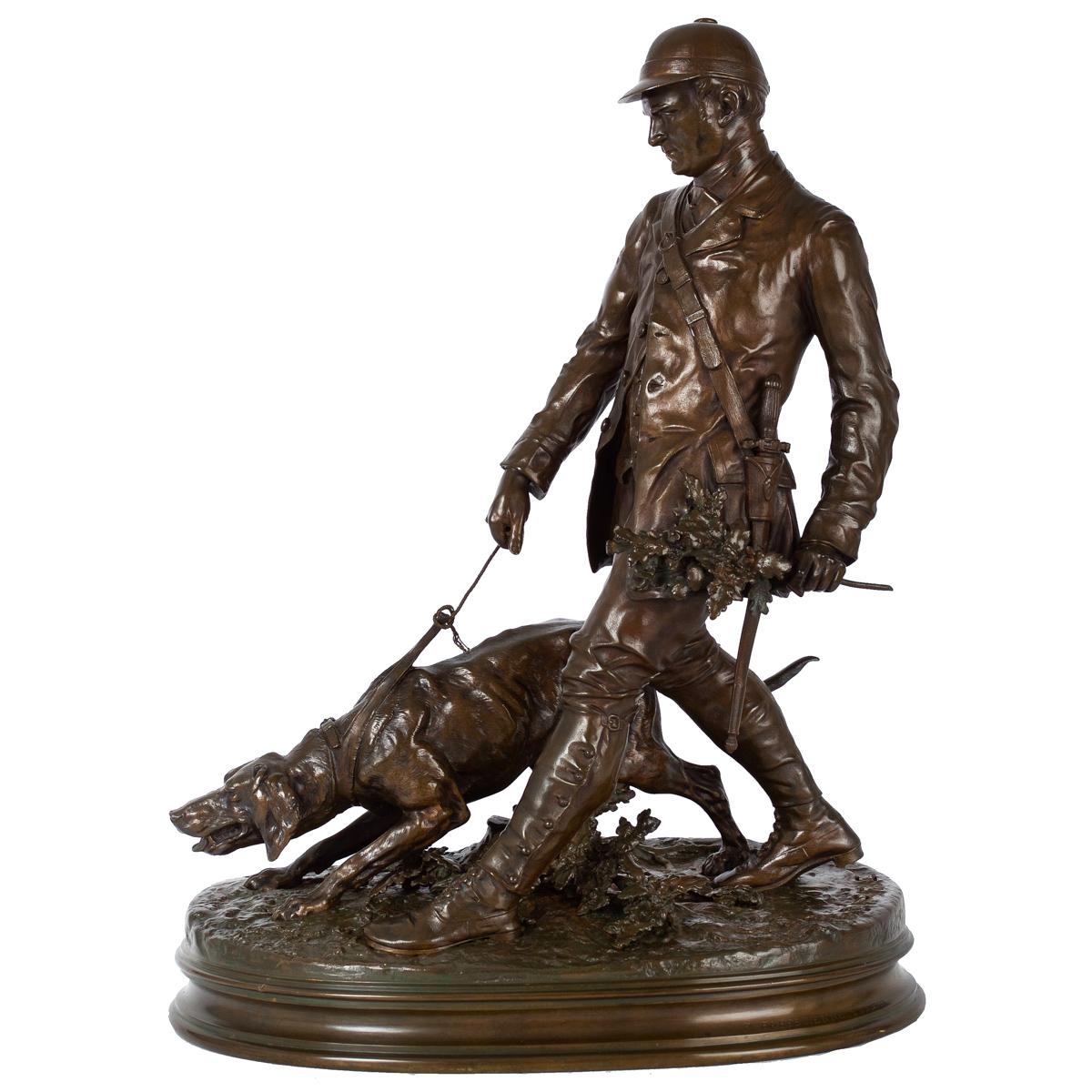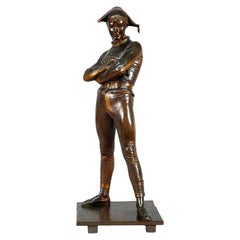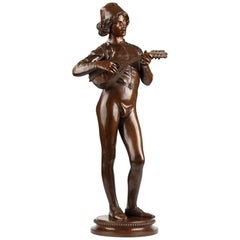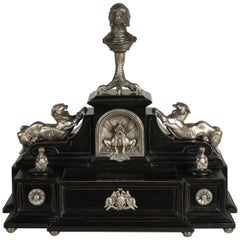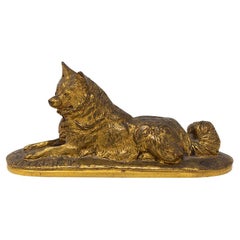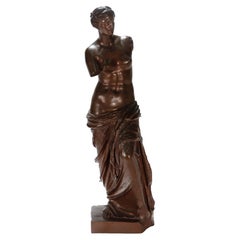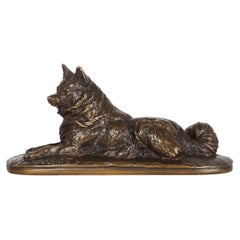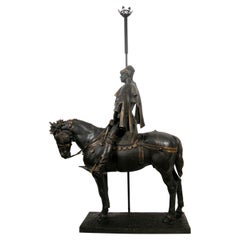
The “Porte-Falot” Bronze Sculpture Signed Frémiet & Barbedienne, France, c. 1910
View Similar Items
Want more images or videos?
Request additional images or videos from the seller
1 of 7
The “Porte-Falot” Bronze Sculpture Signed Frémiet & Barbedienne, France, c. 1910
About the Item
- Creator:F. Barbedienne Foundry (Metalworker),Emmanuel Fremiet (Sculptor)
- Dimensions:Height: 75.6 in (192 cm)Width: 44.1 in (112 cm)Depth: 21.26 in (54 cm)
- Materials and Techniques:
- Place of Origin:
- Period:1910-1919
- Date of Manufacture:circa 1910
- Condition:Wear consistent with age and use.
- Seller Location:PARIS, FR
- Reference Number:Seller: 17091stDibs: LU3860330354282
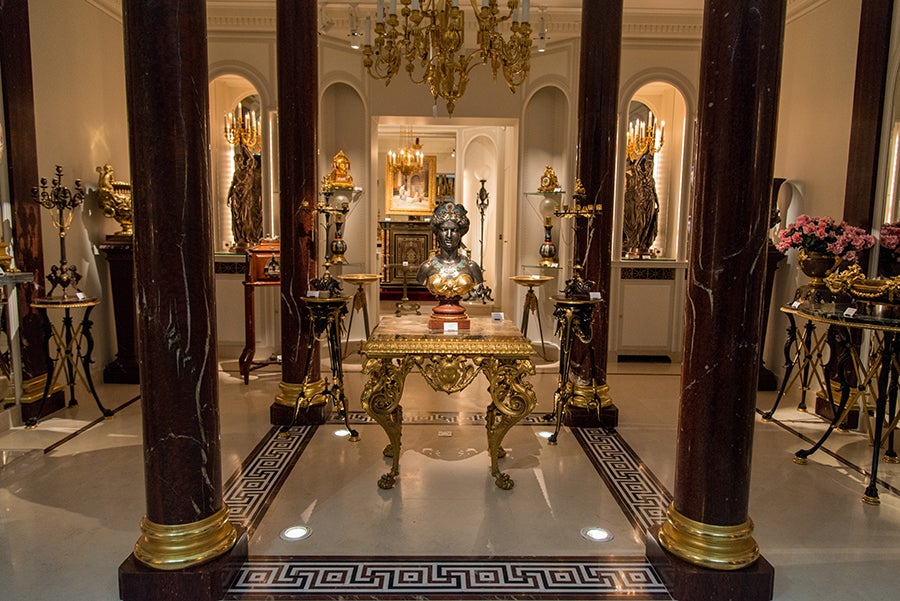
About the Seller
4.9
Vetted Seller
These experienced sellers undergo a comprehensive evaluation by our team of in-house experts.
Established in 1997
1stDibs seller since 2018
76 sales on 1stDibs
Associations
International Confederation of Art and Antique Dealers' Associations
More From This SellerView All
- Harlequin by R. de Saint Marceaux, Cast by F. Barbedienne, France, Circa 1880By F. Barbedienne Foundry, René de Saint-MarceauxLocated in PARIS, FRSignature of René Saint-Marceaux and dated 1879 Signed F. Barbedienne Fondeur Paris A. Collas Mechanical Reduction Stamps Reduced Size: 3/5 Elegant statue of a standing Harlequin, ...Category
Antique 1880s French Figurative Sculptures
MaterialsBronze
- "Florentine Singer" Bronze Sculpture by P. Dubois and F. Barbedienne, Circa 1880By Ferdinand Barbedienne, Paul DuboisLocated in PARIS, FRSigned P. Dubois 1865 and F. Barbedienne fondeur Stamped with réduction mécanique Collas A patinated bronze « Florentine Singer » sculpture, inspir...Category
Antique 1880s French Figurative Sculptures
MaterialsBronze
- Neo-Greek Inkwell by C.G. Diehl, E. Frémiet and J. Brandely, France, Circa 1867By Jean Brandely, Charles-Guillaume Diehl, Emmanuel FremietLocated in PARIS, FRSigned Diehl à Paris. Wood and silvered copper inkwell. Central drawer ornamented with an escutcheon and flanked by two small lateral drawers forming two containers, surmounted by a lid representing a nestling. Central niche ornamented with a winged creature. Inkwell flanked by two felines. Toped by a penholder representing a Moorish head resting on an eagle claw. This exceptional piece was realized thanks to the collaboration of ornemanist J. Brandely, sculptor E. Frémiet and cabinet-maker C.-G. Diehl. The motif of the fantasy creature dear to Diehl, is to be seen on the famous cabinet made by him in 1867 and now exhibited at the Metropolitan Museum of Art in New York (Inv. 1989.197). Arriving in Paris in about 1840 Charles-Guillaume Diehl (1811-1885) founded his cabinet making and decoration firm at 19 rue Michel-le-Comte in 1885. His workshops produced elegant little pieces of furniture in rosewood and thuja and novelties with bronze and porcelain embellishments (see “Les ébénistes du XIXème siècle”, D. Ledoux-Lebard, Ed. de l’amateur, 1982, p.164). It was his luxury boxes, however (liqueur cellarettes, cigar cabinets, games boxes, cashmere cases, jewelry cases) which assured Diehl’s renown (see “l’Art en France sous le Second Empire”, Exposition Grand-Palais, Paris, 1979, p.133). Already rewarded with a bronze medal at the Universal Exhibition of 1855 in Paris, he exhibited a jardinière with china columns and a liqueur cabinet at the Industrial Arts Exhibition in 1861. In collaboration with the designer Jean Brandely (active from 1867 until 1873), Diehl renovated his decorative repertory and created astonishing pieces of furniture in the Grecian style which had a dazzling success at the Universal Exhibition in Paris in 1867, where his cabinets also won a silver medal. Certain motifs were so typical of Diehl’s work that they received extensive commentary by the art critic J. Mesnard in his book “Les Merveilles de l’Exposition Universal de 1867” (vol. II, pp. 133 & 149). He writes of a table of which “the pendant bearing hooks and the fan shaped radiating motif which ornaments the entablature are engraved with love” (p. 133) and a jewelry case where “The head in fine Grecian style makes up the essential part of the fine gilt bronze ornamentation” (p. 149). For this Universal Exhibition Diehl also formed a partnership with two famous sculptors: Emile Guillemin (1841-1907) who carved the relief for a mahogany sideboard with galvanic gilt bronzes (Orsay Museum, Paris, Inv. O.A.O. 992) and Emmanuel Frémiet (1824-1910) who executed the low relief for a cedar medal cabinet...Category
Antique 1860s French Greek Revival Inkwells
MaterialsCopper
- "The Violinist" & "The Wait" Iron Sculptures by J-A Delattre, France, 20th Cent.Located in PARIS, FRThe Violinist – Height : 97 cm (38,1 in.) ; Width : 30 cm (11,8 in.) ; Depth : 43 cm (16,9 in.) The Wait – Height : 93 cm (36,6 in.) ; Width : 36 cm (14,1 in.) ; Depth : 41 cm (16,1 in.) Beautiful pair of wrought iron sculptures representing a violinist and a man holding a rose sheltering with an umbrella under a street lamp. These sculptures are the work of Jean-Alexandre Delattre, a French sculptor born in 1935 and who died in 2022, who specialized in the production of slender wrought iron sculptures, representing sportsmen, jobs or situations. J-A Delattre has also achieved numerous sports trophies...Category
Mid-20th Century French Figurative Sculptures
MaterialsIron
$16,250 Sale Price / set20% Off - Magnificent Console by Barbedienne, Falguière and Dubois, France, Circa 1880By Jean Alexandre Joseph Falguière 1, F. Barbedienne Foundry, Paul DuboisLocated in PARIS, FRTotal height with mirror: 383 cm (151 in.) Console : Height : 97 cm (38 in.) ; Length : 291 cm (114 in.) ; Depth : 47 cm (18 in.) Height with pedestals : 178 cm (70 in.) – Width of pedestals tops : 36 x 23 cm (14 x 9 in.) Provenance: Hôtel de Bourbon-Condé, for the Conte de Chambrun, 12 rue Monsieur, 7th arrondissement, Paris. This magnificent white carrare and bleu turquin marble Louis XVI style console is embellished with carved and gilded bronze ornaments. The belt, adorned with a fluted frieze, masks of Bacchus and rosettes, is standing on six spirally fluted feet with foliage on the extremities. The part meant to be placed against the wall is divided in several pannels framed with moulded and beaded bronze. Above the console stands a giltwood and white-painted mirror, richly decorated at its top with a carved head of Apollo flanked by acanthus leaves and treillis. The mirror is framed by two patinated bronze female figures, each holding seven-light candelabra and standing on pedestals richly adorned with laurel garlands and bronze frames. These are casts by F.Barbedienne, after models by J.A.J. Falguière and P.Dubois (they are signed to the base, one ‘FALGVIERE and F.BARBEDIENNE. FONDEUR’, the other ‘P.DUBOIS’ and ‘F.BARBEDIENNE’). The original models of these bronzes were shown at the 1867 Exposition Universelle before being installed at the Château de Compiègne for the enjoyment of Napoleon III and Empress Eugénie. The masterful console was commissionned to Barbedienne around 1880 to garnish the interiors of the Conte de Chambrun at the Hôtel de Bourbon-Condé, 12 rue Monsieur, 7th arrondissement, Paris. This console was part of the sale of the count’s art and furniture collections that took place on the 18th of June 1900 after the count’s death (listed as lot n°52 in the sale catalogue). Born in 1810, died in Paris in 1892, Ferdinand Barbedienne, the most important caster of bronze pieces of art during the second half of the 19th Century, created and directed in Paris one of the major artistic founderies of his time. Barbedienne specialised in classical reproductions, whose models were exposed in famous European museums. Their illustrated catalogues included many diverse objects such as busts, ornemental sculpture (clocks, candelabras, cups) sometimes even life-sized and also bronzes for furniture. Apart from his own production, Barbedienne worked for the most renowned sculptors such as Barrias, Clésinger and Carrier-Belleuse. All his works were highly esteemed and he, himself honoured by contemporary critics. At the London exhibition in 1851 Barbedienne's firm won two « Council medals ». At the 1855 Universal Exhibition, he won a medal of honour. The success of Barbedienne's firm brought him many official commissions. At the London Universal Exhibition of 1862 Barbedienne won medals in three different categories : Furniture, Silversmith work and Artistic bronzes. Barbedienne was made an officer of the Légion d'Honneur in 1867 and Commander in 1878 when he was compared with « a prince of industry and the king of bronze casting ». His glory did not decline with the passage of the time for at the Universal Exhibition of 1889 the critics thanked Barbedienne for the example he set for other bronze-casters by the perfection of his bronzes. Paul Dubois (1829-1905) studied law before entering the workshop of Toussaint, then the School of Fine Arts. After travelling in Italy, he participated to the Salon of 1863 and won the third medal for the sculpture category. He won several other medals : the Medal of Honour with his Florentine Singer...Category
Antique 1880s French Louis XVI Pier Mirrors and Console Mirrors
MaterialsMarble, Bronze
- Neo-Greek Cigar Cellarette, C.G. Diehl, E. Frémiet & J. Brandely, Circa 1867By Jean Brandely, Charles-Guillaume Diehl, Emmanuel FremietLocated in PARIS, FRRare cigar humidor made in wood, with a front flap, discovering five sliding cane trays. Beautiful bronze and silver electroplated brass ornaments, such as the central niche decorated with a winged creature, surmounted on top of the cabinet with a feline. Resting on four tall legs joined by a stretcher decorated with a silvered pierced bronze incense burner. The central relief of that cellarette for cigars, with that fantasy creature, is directly inspired from the one designed by J. Brandely for the front door of the Merovingian Cabinet made by Diehl in 1867, and now preserved at the Metropolitan Museum of Art in New York (Inv. 1989.197). Arriving in Paris in about 1840 Charles-Guillaume Diehl (1811-1885) founded his cabinet making and decoration firm at 19 rue Michel-le-Comte in 1885. His workshops produced elegant little pieces of furniture in rosewood and thuja and novelties with bronze and porcelain embellishments (see « Les ébénistes du XIXème siècle »,D. Ledoux-Lebard, Ed. de l’amateur, 1982, p.164). It was his luxury boxes, however (liqueur cellarettes, cigar cabinets, games boxes, cashmere cases, jewelry cases) which assured Diehl’s renown (see « l’Art en France sous le Second Empire », Exposition Grand-Palais, Paris, 1979, p.133). Already rewarded with a bronze medal at the Universal Exhibition of 1855 in Paris, he exhibited a jardinière with china columns and a liqueur cabinet at the Industrial Arts Exhibition in 1861. In collaboration with the designer Jean Brandely (active between 1867 and 1873), Diehl renovated his decorative repertory and created astonishing pieces of furniture in the Grecian style which had a dazzling success at the Universal Exhibition in Paris in 1867, where his cabinets also won a silver medal. Certain motifs were so typical of Diehl’s work that they received extensive commentary by the art critic J. Mesnard in his book « Les Merveilles de l’Exposition Universal de 1867 » (vol. II, pp. 133 & 149). He writes of a table of which « the pendant bearing hooks and the fan shaped radiating motif which ornaments the entablature are engraved with love » (p. 133) and a jewelry case where « The head in fine Grecian style makes up the essential part of the fine gilt bronze ornementation » (p. 149). For this Universal Exhibition of 1867, Diehl also formed a partnership with two famous sculptors : Emile Guillemin (1841-1907) who carved the relief for a mahogany sideboard with galvanic gilt bronzes (Orsay Museum, Paris, Inv. O.A.O. 992) and Emmanuel Frémiet (1824-1910) who executed the low relief for a cedar medal cabinet...Category
Antique 1860s French Greek Revival Tobacco Accessories
MaterialsBrass, Bronze
You May Also Like
- French 19th Century Gilded Bronze Dog Fremiet & BarbedienneBy F. Barbedienne Foundry, Emmanuel FremietLocated in Newark, EnglandFine 19th century French gilded bronze model of a dog. The bronze beautifully cast by renowned French sculptor Emmanuel Frémiet. Cast as a recumberant Samoyed on an elongasted oval b...Category
Antique Late 19th Century French Napoleon III Animal Sculptures
MaterialsBronze
- Large Signed Barbedienne Antique French Bronze Sculpture of the Venus de MiloBy F. Barbedienne FoundryLocated in Philadelphia, PAA fine antique bronze sculputre. Depicting the Venus de Milo. After the ancient model by Alexandros of Antioch. Bearing an Achille Collas reduction seal and a Barbedienne mark. P...Category
Antique 19th Century French Belle Époque Figurative Sculptures
MaterialsBronze
- French Antique Bronze Sculpture of Husky Dog by Emmanuel FremietBy Emmanuel FremietLocated in Shippensburg, PAEMMANUEL FREMIET French, 1824-1910 Chien loulou couché Nuanced brown patina on sand-cast bronze Signed in base "E. FREMIET" a Charles More cast numbered 213 Item # 202FPP12G A good lifetime casting by Charles More numbered 215, it captures the entirely relaxed spirit of the recumbant husky dog...Category
Antique 19th Century French Romantic Animal Sculptures
MaterialsBronze
- Rare Gilt Bronze Sculptural Group By Emmanuel Fremiet (1824 - 1910)By Emmanuel FremietLocated in Norwood, NJEmmanuel Fremiet (1824 - 1910) Gilt bronze figural group of a Satyr battling a bear, signed: E. Fremiet with foundry mark: F. Barbedienne Fondeur. Latin transcription on base: Teree ...Category
Antique Late 19th Century French Figurative Sculptures
MaterialsBronze
- Bronze Sculpture of Atalanta by the F. Barbedienne FoundryBy F. Barbedienne FoundryLocated in West Palm Beach, FLThis beautiful 19th century grand-tour piece of the goddess Atalanta was created by the Ferdinand Barbedienne foundry in Italy. The piece is hallmarked with F. Bernedienne Fondeur on...Category
Antique Late 19th Century Italian Grand Tour Figurative Sculptures
MaterialsBronze
- Bronze Sculpture of the Venus de Milo by F. BarbedienneBy F. Barbedienne FoundryLocated in West Palm Beach, FLThis cast bronze sculpture of the Venus de Milo dates to the 1860s-1880s and was cast by the F. Barbedinne foundry in Paris started in 1838 by Ferdinand Barbedienne and Achille Colla...Category
Antique Late 19th Century French Grand Tour Figurative Sculptures
MaterialsBronze
Recently Viewed
View AllMore Ways To Browse
1910 Hall Light
F I1
Marble 1910
Antique Business Sign
Antique Business Signs
Crown French Bronze
Furniture Of French Leaders
Antique Decorative Lanterns
Bell Lantern
French Imperial
Antique Law Office Furniture
Antique Hunting Sign
Antique Hunting Signs
French Foot Rest
French Mermaid
Du F
Lantern Paris
Equestrian Theme

